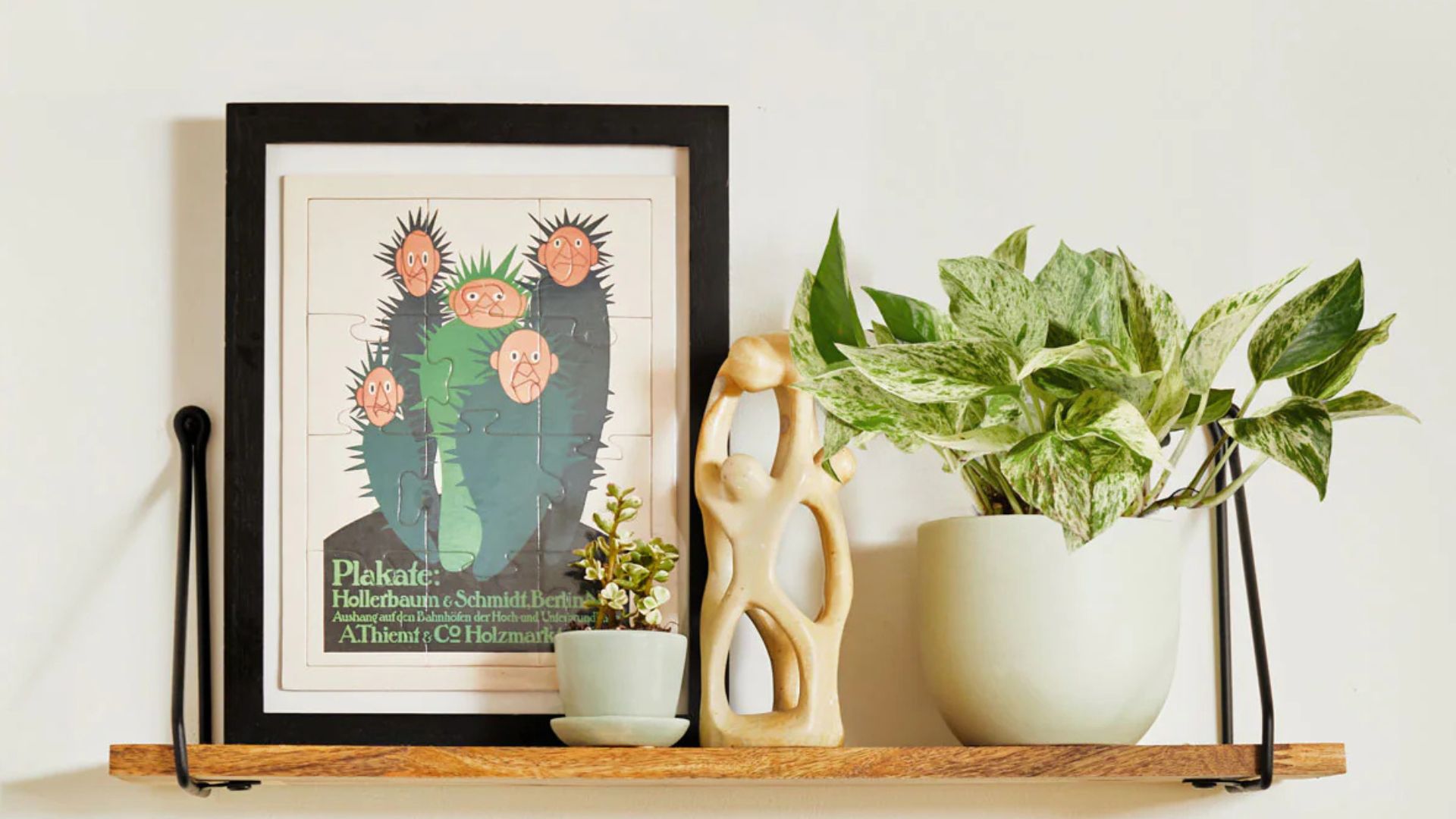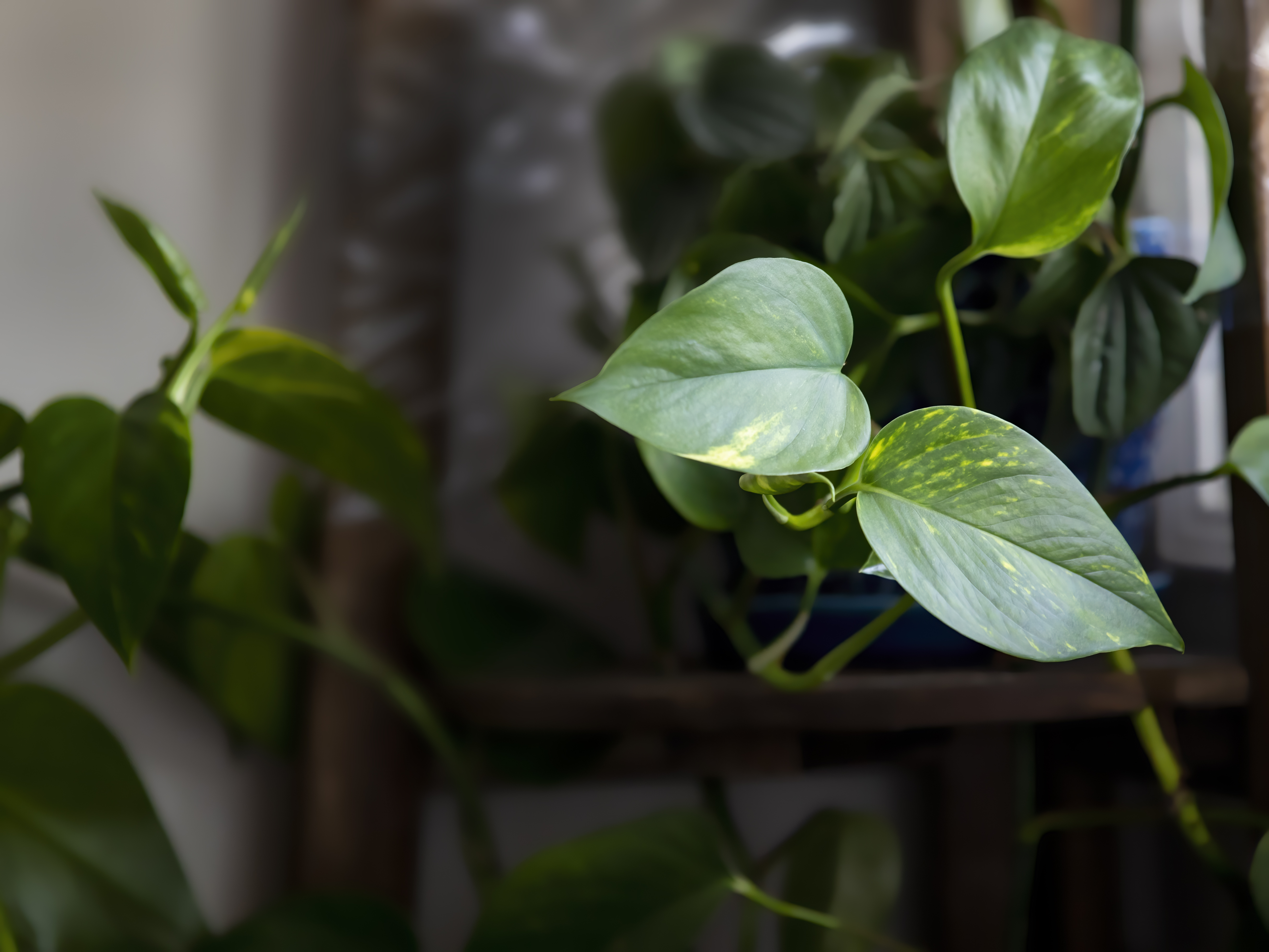
The pothos — perhaps more commonly known as Devil's Ivy — is one of the most popular houseplants out there. Universally loved for its low-maintenance propensity and its heart-shaped leaves that grow on twirly tendrils, the pothos is the perfect greenery to brighten boring corners, plain windowsills, and drab tabletops. Better still, it's really easy to care for, too.
There's good reason why this beginner-friendly greenery has become one of the most popular houseplants. This leafy decor is super adaptable, tolerating a variety of conditions without demanding much attention at all. If you're a "hands off" kind of plant parent, you and the pothos are definitely well-matched.
That doesn't mean you can neglect this plant completely, though. Even independent growers like the pothos need care and attention every now and then in order to flourish. If you want your Devil's Ivy to really thrive in its indoor environment, here's what you need to know.
Pothos Plant Care

Plant expert Tom Knight, owner of Ourhouseplants, says pothos (latin name Epipremnum) are the definition of low-maintenance houseplants. "If you can keep them away from the cold and direct sunlight, they'll need only minimal fussing, perhaps just snipping off the odd stray vine or removing a brown leaf now and again," he says.
That said, there are many different pothos varieties, and while care needs are generally the same across the board, each type will have certain preferences. (The Jade pothos, for example, can tolerate lower levels of sunlight compared to its brothers and sisters.) Be sure to do your research if you want advance your plant care skills, but the advice below is suitable for every type of pothos. Here are some of the most important factors to consider when introducing a pothos plant to your indoor garden.
Light: Native to Southeast Asia, Indonesia, and the Solomon Islands, the pothos is a tropical plant. This means it prefers lots of bright but indirect sunlight.
"In its natural growing conditions the plant sees the sun through trees or a translucent curtain for up to four hours per day," notes Lisa Price, owner of Root Houseplants. "If you were to measure the light intensity with a light meter, 100-300 foot-candles would be ideal for good growth. Higher would mean more pronounced variegation but direct light would lead to the leaves becoming faded."
So, how does that translate to your home? Paris Lalicata, plant expert at The Sill, suggests a north or east-facing window. "If you don’t have the means of natural lighting you can always use a grow light," she says. That said, Tom notes that the pothos is one of the best houseplants for beginners because it can also tolerate lower light levels. "If you choose to grow it in a darker spot, just be aware that they'll grow more slowly," he says.
Temperature: While the pothos is pretty forgiving, it doesn't like extreme temperatures. When it comes to preferred temperature, the ideal range is between 60-85 degrees Fahrenheit. Avoid extremes to prevent stress. (This could also be one of the reasons why your pothos' leaves are turning yellow.)
Water: While warm, the tropics see lots of rain, so you should water your pothos often. "The frequency of watering is determined by the proximity of the plant to the light; the nearer the window the more often it would require watering," notes Lisa. "Get used to the weight of the plant when you’ve given it a drink and pick it up again a week or two later to see how much lighter it is. A light plant is indicative that it's thirsty."
Humidity: The humidity inside your home shouldn't have too much bearing on the health of your plant, but Devil's Ivy is more of a humidity-loving houseplant due to its tropical ancestry. If you notice browning leaf tips, this could be a sign your plant needs higher humidity. To remedy, consider spritzing the leaves of your pothos weekly or fortnightly with a mister like this Indoor/Outdoor Glass Plant Mister, from Target.
Growth: The rate your pothos grows will depend on how much light it gets. Plants in lower light places will generally grow slowly, but the stems can become leggy as they try to reach light. "Pothos plants with medium or bright light, however, will grow very fast, especially when temperatures are warmer over the summer months," says Tom.
That said, the plant won't need regular repotting and can live in the same container for many years without problems. "I try and freshen up the potting mix and improve the soil health by repotting my Pothos plants every three or four years," says Lisa.
Pests: As with most houseplants, there's a small risk of pest infestations with this plant. "One of the most common pests for pothos is the mealybug which likes to hide in the nooks and crevices of the plant," says Paris. "These are white, cottony, segmented insects that create a powdery secretion over their bodies."
Be sure to check your foliage and soil regularly and wipe any infected areas of the plant with rubbing alcohol on a cotton swap.
Price: $18
Size: 4" pot
Consider yourself a green thumb? This Pothos nursery plant arrives in a small four inch pot so you can watch it grow and practice your plant parenting.
Price: $21
Size: 8" pot
Looking to brighten up a boring windowsill or liven up a tabletop? This pothos plant comes complete with a decorative stoneware planter to complement your decor.
Price: $30
Size: 19"
If you don't trust your plant care skills just yet, consider an artificial pothos instead. This option from Lowes comes in a hanging pot to add visual interest to your home without taking up surface space.
FAQs
Do pothos like to climb or hang?
Pothos plants can both climb and hang. Similar to a monstera, they climb tree trunks in the wild using aerial roots for balance and nutrients, but they can also grow along the ground. Thanks to their cascading stems, mature pothos plants also make one of the best trailing houseplants when hung from a planter.
"If you want to grow them vertically or want them to produce larger leaves, use a moss pole or coconut totem," suggests Tom. "Pothos produce small aerial roots and will gladly clamber up a support like this, but you can skip this and have them as trailing or hanging plants, too."
Should I mist a pothos plant?
Whether or not you should mist a pothos plant will depend on the humidity levels inside your home. It's a good idea to maintain a humidity between 50 to 80 percent to mimic its conditions.
If your pothos is a kitchen or bathroom (which are naturally humid environments) it won't need misting, but if it's in a drier room or near to a heat source you might need to mist your plant every week or so. You can also add a humidifier or try using a humidity tray like this one from Amazon to ensure your Devil's Ivy receives plenty of moisture.
Price: $29.99
Finish: Gold
This stainless steel watering can has a sleek, glossy finish and alluring shape make for the perfect piece within the home.
Price: $17.97
Color: Black
This stylish black watering can from Walmart comes with a long spout which makes for an easy plant-watering solution.
Price: $5
Color: Quilt Blue
Add a pop of color to your indoor garden with this beautiful powder blue watering can, from Target.
Compared to many other houseplants, caring for a pothos is relatively simple. As with all plants, keep a close eye on your foliage and soil to check for diseases and pests, and make sure you adapt your watering regime throughout the seasons so your plant can easily transition between fluctuations in light and temperature.
If you want to decorate your home with flourishing foliage that's not only beautiful to look at but easy to care for, then the pothos plant is for you. This low-maintenance plant doesn't ask you for much, and yet, what it offers in return is extremely rewarding.







